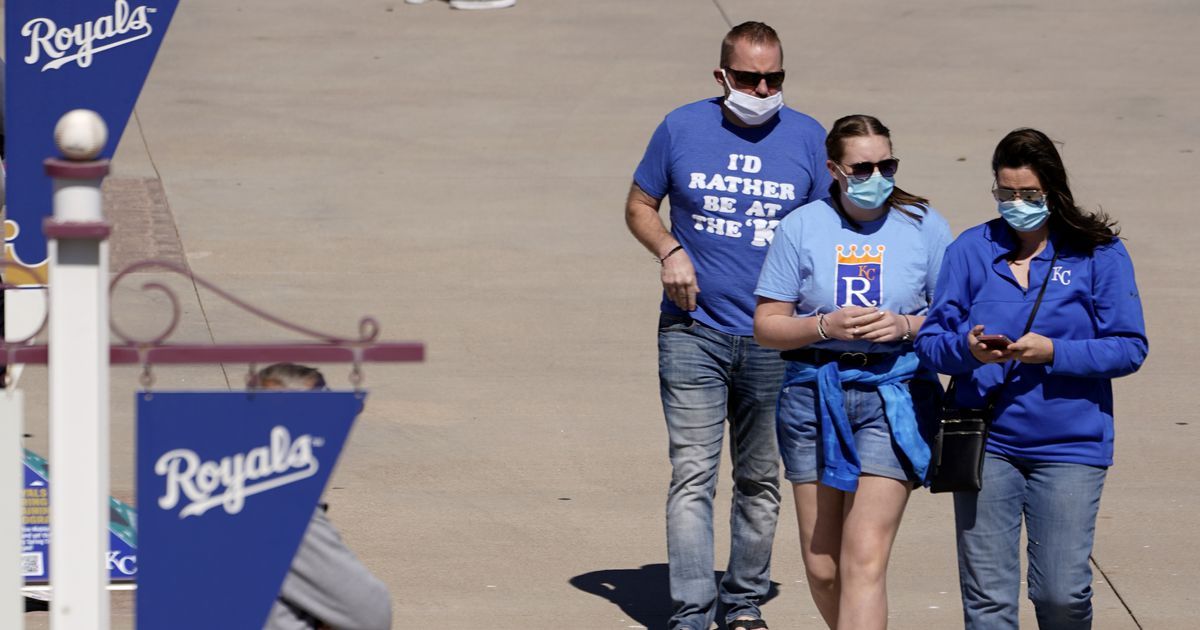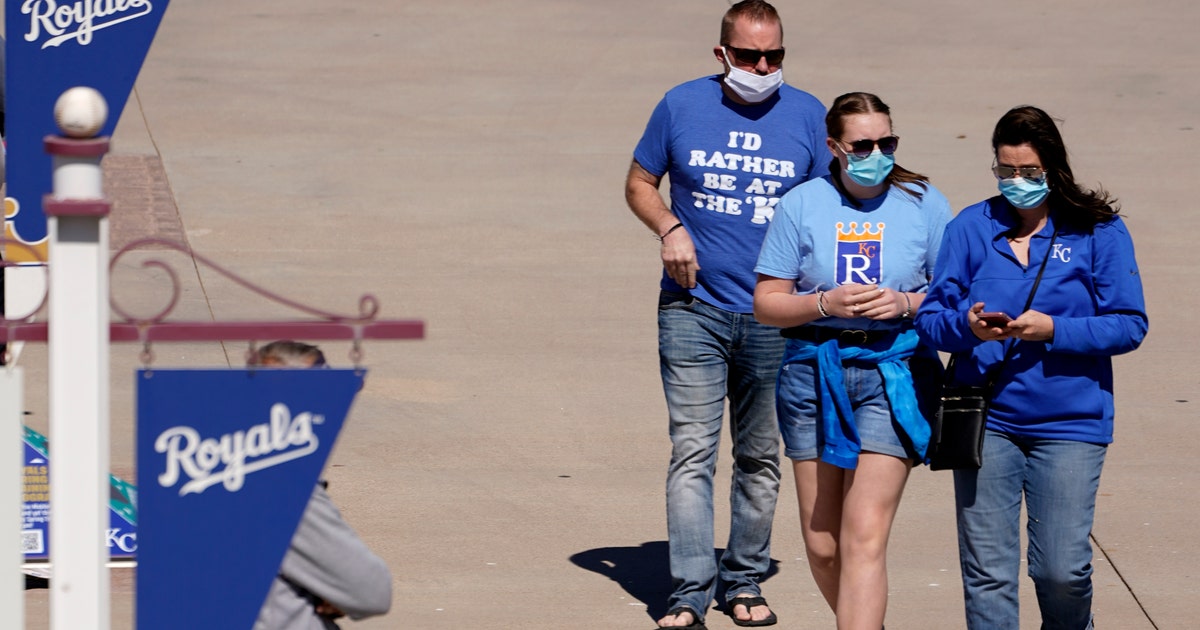MLB takes a small step toward normality as fans return to spring training games


SCOTTSDALE, Ariz. — Brian Delaney checked his ticket, found his seats and then sat down for a minute in the sunshine. It wasn’t a typical late February day in Arizona — a little cool, a little breezy — but Delaney didn’t complain a bit.
“You ever been through a Colorado winter?” the Colorado Rockies fan said with a grin.
The good humor and smiles were easy to find as baseball fans streamed into Sunday afternoon’s spring training opener between the Rockies and Arizona Diamondbacks. A downward trend in COVID-19 cases throughout most of the country has meant that a limited amount of fans are allowed back in spring training facilities throughout Arizona and Florida.
At Salt River Fields at Talking Stick, the crowd was capped at about 2,200 fans, which is 16% of the usual capacity. Delaney said he never hesitated to get tickets for himself and Debra Mierzwa once they went on sale a few weeks ago.
“Oh yeah,” Delaney said. “We were never worried. This is great.”
The happy and halfway-normal scene on Sunday was a far cry from 353 days ago, when incredulous fans stood outside Salt River Fields and digested the news that baseball — and pretty much the rest of the world — was being shutdown because of the spreading coronavirus pandemic.
Nearly a year later, things are very different.
“It seemed like forever,” said Brandon Ramsey, who lives in the Phoenix area and went to the Reds-Indians game in Goodyear on Sunday. “Last year got cut a little short. To come out here for opening day us just fantastic. They did a great job in socially distancing. They made sure we were safe.”
Aside from the World Series and NL Championship Series held last October at a neutral-site park in Arlington, Texas, this marked the first time fans were allowed at big-league baseball games since March 12.
By now the safety protocols for sports events have become familiar. Fans in Scottsdale are spread out in small pods of two, four or six people. Masks are worn except when eating and drinking. People sitting on blankets in the grass beyond the outfield wall were given spray-painted squares to stay separate. Cleaning crews are ubiquitous.
But spring baseball appears to have a considerable safety advantage over its NBA, NHL and college basketball counterparts: It’s played outdoors, where studies have shown the virus is less effective at spreading.
“We feel really good about our ability to host spring training in the safest possible way,” Cactus League executive director Bridget Binsbacher said.
All 30 teams in Major League Baseball are allowing fans at their spring training facilities in Arizona and Florida, though capacity will be severely limited. The Chicago Cubs are welcoming the most fans (3,630 per game) while the San Francisco Giants will have the fewest (1,000 per game).
The Yankees and Twins have the largest percentage of seats available, with the potential to reach 28% of capacity.
Fans certainly seem excited about getting back to the park. The players have missed them, too.
Oakland right-hander Daulton Jefferies got a thrill from facing the loaded Los Angeles Dodgers lineup with fans in the seats at last. The limited crowd of 1,998 was a sellout at Hohokam Stadium in Mesa, Arizona.
“Even though it’s 20-percent capacity, it didn’t feel like it,” Jefferies said. “Everyone was very loud. It was just a lot of fun. I think we truly underestimated how much we missed it.”
The outlook for spring training has changed drastically just in the past month. Back in January, the Cactus League sent a letter to MLB suggesting that the spring schedule be delayed because of high COVID-19 case counts in Maricopa County, which is home to all 15 teams in Arizona.
But then cases plummeted in Arizona and the plan to play games pushed forward. Binsbacher and others became much more optimistic.
For some fans, the progress came too late.
Don Witynski is a 58-year-old Milwaukee Brewers fan from Wisconsin who has traveled to Arizona the past four years for about a week during spring training. He said his family of four would watch three or four baseball games, but the trip also includes hiking and other outdoor activities in the Arizona sun.
Not this year. He said most of his friends are staying in Wisconsin this year, though a few will make the trip to the desert.
“We’re hunkering down, staying home,” Witynski said. “I’ve got teenagers, 13-year-old twins. Obviously until this vaccine rolls out more, we’re definitely staying home this year, unfortunately.”
Those are the kinds of stories that have Arizona and Florida bracing for another year of lost revenue. But limited fans are better than no fans. The appetite to watch baseball appears strong: The Rockies and Diamondbacks — who share the Salt River Fields facility — both sold out their entire spring ticket allotments about 24 hours after they went public.
Delaney said he and Mierzwa were coming to Arizona regardless of the baseball situation. They enjoy trail running and Arizona in February is a fine time for that sport. Businesses in Arizona hope there are more Delaneys and Mierzwas out there to make 2021 a little less painful.
“It’s all part of moving the right direction,” Binsbacher said. “I can’t stress enough – health and safety was at the forefront of everything we did. But the financial numbers are real. It definitely impacts our businesses and the numbers speak for themselves. It’s a tremendous impact.”
The COVID-19 hit to Central Arizona’s baseball economy was stark: A study from Arizona State University found that the Cactus League’s season generated an estimated economic impact of $363.6 million in 2020 before the shutdown in mid-March, which was down nearly $300 million from the estimated $644.2 million generated in 2018.
The study added that 2020 would have been “on a par” with 2018 had it not been for the coronavirus.
As for 2021, there is cautious optimism that the Cactus League season won’t be a complete washout for the local economy. But for hotels, restaurants, bars, golf courses and rental house companies, there’s little doubt that finances will take a hit for a second straight year.
Stephanie Pressler, who is the director of community affairs for Experience Scottsdale, said businesses are balancing realism with a little optimism now that COVID-19 cases have gone down and all teams are allowing at least some fans.
“This is normally the busiest time of year for Scottsdale’s tourism industry, largely because of Cactus League spring training,” Pressler said in an email. “Understandably, our expectations are muted this year given the ongoing pandemic, though Experience Scottsdale is excited that the season is moving forward in a way that will keep teams, fans, employees and residents safe.”






